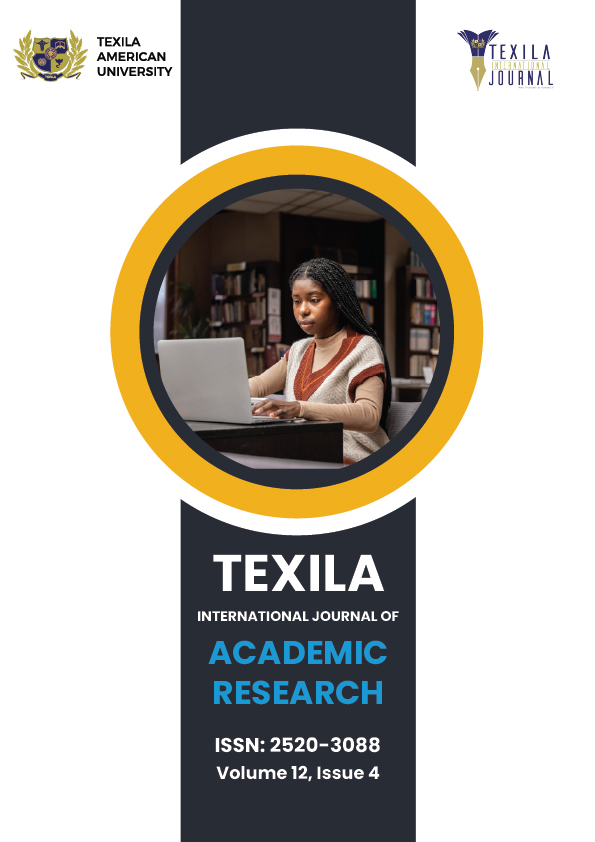[1].
Oguntibeju, O. O., 2012. Quality of life
of people living with HIV and AIDS and antiretroviral therapy. HIV/AIDS
(Auckland, N.Z.), 4, 117–124.
[2].
Mathebula, R. L., Maimela, E., &
Ntuli, N. S., The prevalence of selected non-communicable disease risk factors
among HIV patients on anti-retroviral therapy in Bushbuckridge sub-district,
Mpumalanga province. BMC Public Health, 20, 247 2020.
[3].
Boakye, H., Atabila, A., Hinneh, T., Ackah,
M., Ojo-Benys, F., Bello, A. I., 2023, The prevalence and determinants of
non-communicable diseases among Ghanaian adults: A survey at a secondary
healthcare level. PLoS ONE, 18(2): e0281310.
[4].
Syed, M. A., Alnuaimi, A. S., Zainel, A.
J., & A/Qotba, H. A., 2019. Prevalence of non-communicable diseases by age,
gender and nationality in publicly funded primary care settings in Qatar. BMJ
Nutrition, Prevention & Health, 2(1), 20–29.
[5].
Garg, A., Anand, T., Sharma, U., Kishore,
J., Chakraborty, M., Ray, P. C., & Ingle, G. K., 2014. Prevalence of Risk
Factors for Chronic Non-Communicable Diseases Using WHO Steps Approach in an
Adult Population in Delhi. Journal of Family Medicine and Primary Care,
3(2), 112–118. https://doi.org/10.4103/2249-4863.137617
[6].
Jackson, I. L., Lawrence, S. M., Igwe, C.
N., Ukwe, C. V., & Okonta, M. J., 2022. Prevalence and control of
hypertension among people living with HIV receiving care at a Nigerian
hospital. The Pan African Medical Journal, 41, 153.
[7].
Ilesanmi, O. S., Akpa, O. M., 2020.
Prevalence and risk factors of hypertension in HIV-positive adults on
antiretroviral therapy in Ondo State, Nigeria. HIV & AIDS Review,
19(3), 199-205.
[8].
Akelola, R., Wamukoya, E., & Situma,
J., 2024. Effect of Food-based Nutrition Intervention on Management of
Non-Communicable diseases among People living with HIV in Busia County
Hospital, Kenya. African Journal of Food, Agriculture, Nutrition and
Development; Vol. 24:1.
[9].
Magafu, M. G., Moji, K., Igumbor, E. U.,
Magafu, N. S., Mwandri, M., Mwita, J. C., Habte, D., Rwegerera, G. M., &
Hashizume, M., 2013. Non-communicable diseases in antiretroviral therapy
recipients in Kagera Tanzania: a cross-sectional study. The Pan African Medical
Journal, 16, 84.
[10]. Achwoka,
D., Oyugi, J. O., Mutave, R., Munywoki, P., Achia, T., Akolo, M., Muriuki, F.,
Muthui, M. and Kimani, J. 2020. High prevalence of non-communicable diseases
among key populations enrolled at a large HIV prevention & treatment
program in Kenya. PLoS One, 2;15(7): e0235606.
[11]. Chhoun,
P., Tuot, S., Harries, A. D., Kyaw, N. T, Pal, K., Mun, P., Brody, C., Mburu, G.,
Yi, S., 2017. High prevalence of non-communicable diseases and associated risk
factors amongst adults living with HIV in Cambodia. Plos One,
12(11):e0187591.
[12]. Rimamnunra,
G. N., Utoo, P. M., Ngwoke, K., Bako, I. A., Akwaras, A. N., Swende, L. T.,
Omokhua, O.E., Ogbeyi, G. O., Izeji, R. I., Daniel, D. A. & Akobi, M. A.,
2023, Prevalence of Non-Communicable Diseases among HIV Positive Patients on
Antiretroviral Therapy at a Tertiary Health Facility in Makurdi, North-
Central, Nigeria. The Nigerian Health Journal; 23(3): 734 –740.
[13]. Kansiime,
S., Mwesigire, D., & Mugerwa, H., 2019. Prevalence of non-communicable
diseases among HIV positive patients on antiretroviral therapy at joint
clinical research centre, Lubowa, Uganda. PloS one, 14(8), e0221022. https://doi.org/10.1371/journal.pone.0221022
[14]. Hadavandsiri,
F., Shafaati, M., Mohammad Nejad, S., Ebrahimzadeh Mousavi, M., Najafi, A.,
Mirzaei, M., Narouee, S., & Akbarpour, S., 2023. Non-communicable disease
comorbidities in HIV patients: diabetes, hypertension, heart disease, and
obstructive sleep apnea as a neglected issue. Scientific reports, 13(1),
12730.
[15]. Kagaruki,
G. B., Mayige, M. T., Ngadaya, E. S., Kimaro, G. D., Kalinga, A. K., Kilale, A.
M., Kahwa, A. M., Materu, G. S. and Mfinanga, S. G., 2014. Magnitude and risk
factors of non-communicable diseases among people living with HIV in Tanzania:
a cross-sectional study from Mbeya and Dar es Salaam regions. BMC Public
Health, 14(1):904.
[16]. Coetzee,
L., Bogler, L., De Neve, J. W., Bärnighausen, T., Geldsetzer, P., &
Vollmer, S., 2019. HIV, antiretroviral therapy and non-communicable diseases in
sub-Saharan Africa: empirical evidence from 44 countries over the period 2000
to 2016. Journal of the International AIDS Society, 22(7), e25364.
[17]. Finkelstein,
J. L., Gala, P., Rochford, R., Glesby, M. J., & Mehta, S., 2015. HIV/AIDS
and lipodystrophy: implications for clinical management in resource-limited
settings. Journal of the International AIDS Society, 18(1), 19033. https://doi.org/10.7448/IAS.18.1.19033
[18]. Willig,
A. L., & Overton, E. T., 2016. Metabolic Complications and Glucose
Metabolism in HIV Infection: A Review of the Evidence. Current HIV/AIDS
reports, 13(5), 289–296. https://doi.org/10.1007/s11904-016-0330-z
[19]. Masuku, S., Tsoka-Gwegweni, J. M., Benn. S.,
2019. HIV and antiretroviral therapy-induced metabolic syndrome in people
living with HIV and its implications for care: A critical review. Journal of
Diabetology. 10. 41. 10.4103/jod.jod_21_18.
[20]. Jumare,
J., Dakum, P., Sam-Agudu, N., et al., 2023, Prevalence and characteristics of
metabolic syndrome and its components among adults living with and without HIV
in Nigeria: a single-center study. BMC Endocr Disord, 23, 160. https://doi.org/10.1186/s12902-023-01419-x
[21]. Koethe, J. R., Lagathu, C., Lake, J. E., et al., 2020, HIV and antiretroviral therapy-related fat
alterations. Nat Rev Dis Primers, 6, 48. https://doi.org/10.1038/s41572-020-0181-1
[22]. Madden,
V. J., Parker, R., & Goodin, B. R., 2020. Chronic pain in people with HIV: A
common comorbidity and threat to quality of life.
Pain management, 10(4), 253–260. https://doi.org/10.2217/pmt-2020-0004
[23]. Mazzuti, L., Turriziani, O., Mezzaroma, I., 2023. The Many Faces of
Immune Activation in HIV-1 Infection: A Multifactorial Interconnection. Biomedicines,
11(1):159.
[24]. Pedroso, C. F., Pereira, C. C., Cavalcante, A. M. R. Z., & Guimarães,
R. A., 2023. Magnitude
of risk factors for chronic noncommunicable diseases in adolescents and young
adults in Brazil: A population-based study. PloS one, 18(10), e0292612. https://doi.org/10.1371/journal.pone.0292612
[25]. Nnate, D. A., Eleazu, C. O., & Abaraogu, U. O., 2021. Ischemic
Heart Disease in Nigeria: Exploring the Challenges, Current Status, and Impact
of Lifestyle Interventions on Its Primary Healthcare System. International Journal
of Environmental Research and Public Health, 19(1), 211.
[26]. McMaughan,
D. J., Oloruntoba, O., and Smith, M. L., 2020. Socioeconomic Status and Access
to Healthcare: Interrelated Drivers for Healthy Aging. Front Public Health,
18;8:231. Doi: 10.3389/fpubh.2020.00231.
[27]. Okeke,
F. O., Sam-Amobi, C. G., & Okeke, F. I., 2020. Role of local town planning
authorities in building collapse in Nigeria: evidence from Enugu metropolis. Heliyon,
6(7), e04361.
[28]. Okoli,
F. U., Johnson, N.G., & Ejikeme, J. O., 2017. Mapping Groundwater Potential
Zones in Enugu State using Remote Sensing and GIS Techniques, International
Journal of Innovative Environmental Studies Research, 5(1):33-46,
Jan.-Mar.,
[29]. Ezeala-Adikaibe,
B., Aneke, E., Orjioke, C., Ezeala-Adikaibe, N., Mbadiwe, N., Chime, P., &
Okafor, U., 2014. Pattern of medical admissions at Enugu state University of
Science and Technology Teaching Hospital: a 5-year review. Annals of medical
and health sciences research, 4(3), 426–431.
[30]. Abugu, J. O., Chukwu, A. M., Onyeso, O. K., et al. 2023. Determinants
of the managerial staff’s disposition towards e-payment platforms in public
tertiary hospitals in Enugu, Nigeria: a cross-sectional study. BMC Health
Serv Res, 23, 1240.
[31]. Nnorom,
J. C., 2020. Imagining Enugu as classroom for theological education in SIST. A
trans-disciplinary approach. Missionalia, 48(2), 196-212.
[32]. Egbara, E. A., Ofodu, H., Onuoha, S. N., 2024. Urbanization and
Housing Facility in Enugu Urban, Enugu State of Nigeria. International
Journal of Research and Innovation in Social Science, ISSN No. 2454-6186 |
DOI: 10.47772/IJRISS |Volume VII Issue IX.
[33].
Tate, T., Willig, A. L., Willig, J. H.,
Raper, J. L., Moneyham, L., Kempf, M. C., Saag, M. S., and Mugavero, M. J.,
2012. HIV infection and obesity: where did all the wasting go? Antivir Ther,
17(7):1281.
[34]. Magodoro,
I. M., Esterhuizen, T. M., and Chivese, T., 2016. A cross-sectional,
facility-based study of comorbid non-communicable diseases among adults living
with HIV infection in Zimbabwe. BMC Res Notes, 9(1):379.
[35]. Shah,
M., Atta, A., Qureshi, M.I. and Shah, H., 2012. Impact of Socio-economic Status
(SES) of Family on the Academic Achievements of Students. Gomal University
Journal of Research, 28, 12-17.
[36]. Mohammad,
A. M., Sheikho, S. K., and Tayib, J. M., 2013. Relation of Cardiovascular Risk
Factors with Coronary Angiographic Findings in Iraqi Patients with Ischemic
Heart Disease. Am J Cardiovasc Dis Res., 1(1):25–9.
[37]. El-Sadr,
W. M, and Goosby, E., 2018. Building on the HIV platform: tackling the
challenge of noncommunicable diseases among persons living with HIV. AIDS
(London, England), 32: S1–S3.
[38]. Peck,
R. N., Shedafa, R., Kalluvya, S., Downs, J. A., Todd, J., Suthanthiran, M, et
al., 2014. Hypertension, kidney disease, HIV and antiretroviral therapy among
Tanzanian adults: a cross-sectional study. BMC Med, 12:125.
[39]. Vorkoper,
S., Kupfer, L. E., Anand, N., Patel, P., Beecroft, B., Tierney, W. M., et al.,
2018. Building on the HIV chronic care platform to address noncommunicable
diseases in sub-Saharan Africa: a research agenda. AIDS (London, England),
32:S107–SS13.
[40]. Rabkin, M., Palma, A., McNairy, M. L., Gachuhi, A. B., Simelane, S.,
Nuwagaba-Biribonwoha, H., et al., 2018. Integrating
cardiovascular disease risk factor screening into HIV services in Swaziland:
lessons from an implementation science study. AIDS (London, England),
32: S43–SS6.
[41]. Kwarisiima, D., Balzer, L., Heller, D., Kotwani, P., Chamie, G., Clark, T,
2016. Population-based
assessment of hypertension epidemiology and risk factors among HIV-positive and
general populations in rural Uganda. PLoS One. 2016;11(5): e0156309.
[42]. Alvarez, C., Salazar, R., Galindez, J., Rangel, F., Castañeda, M.L., et.al.,2010.
Metabolic
syndrome in HIV-infected patients receiving antiretroviral therapy in Latin
America. Braz J Infect Dis.,14(3):256–63.
[43]. Deeks,
S. G., and Phillips, A. N., 2009. HIV infection, antiretroviral treatment,
ageing, and non-AIDS related morbidity. BMJ, 338:a3172.
[44]. Nigatu,
T., 2012. Integration of HIV and noncommunicable diseases in health care
delivery in low-and middle-income countries. Prev Chronic Dis. 2012;9.
[45]. Remais,
J. V., Zeng, G., Li, G., Tian, L., and Engelgau, M. M., 2012. Convergence of
non-communicable and infectious diseases in low-and middle-income countries. Int
J Epidemiol, 42(1):221–227.


